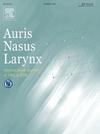Post-earthquake dizziness syndrome (PEDS): A comprehensive review of recent advances
IF 1.5
4区 医学
Q2 OTORHINOLARYNGOLOGY
引用次数: 0
Abstract
Earthquakes pose significant health challenges, including post-earthquake dizziness syndrome (PEDS), which is characterized by dizziness, vertigo, imbalance, nausea, and motion sensations. This review aimed to examine the intricate relationships between earthquake characteristics, building types, and dizziness, with a particular focus on the function of the autonomic nervous system in mediating these effects. The prevalence of PEDS varies based on earthquake magnitude, demographics, and environmental conditions, affecting 20–40 % of the population in regions such as Hokkaido, Kumamoto, Türkiye, Georgia, Fukushima, and Nepal. Its pathophysiology involves vestibular dysfunction, such as otolithic disturbances and benign paroxysmal positional vertigo; environmental instability from tilted or damaged structures; and psychological stress, which disrupts the vestibular, proprioceptive, and autonomic systems. Building dynamics influence the symptoms, with high-rise swaying, rigid low-rise jolts, and damaged structures exacerbating vestibular overload. Low-frequency quakes affect tall buildings, whereas high-frequency quakes affect rigid buildings, with aftershocks prolonging recovery. The autonomic nervous system plays a crucial role, with heightened sympathetic activity linked to dizziness and stress, thereby creating a feedback loop. Management strategies include seismic retrofitting, vestibular rehabilitation therapy, and psychological interventions such as cognitive-behavioral therapy, pharmacological treatments, and environmental adjustments to reduce sensory conflicts. Public education and preparedness are vital for minimizing panic and improving resilience, emphasizing the need for multidisciplinary approaches that combine engineering, medical, and psychological strategies to mitigate earthquake-related dizziness.
震后头晕综合征(PEDS):近期进展的综合综述
地震带来了重大的健康挑战,包括震后头晕综合征(PEDS),其特征是头晕、眩晕、失衡、恶心和运动感觉。本综述旨在研究地震特征、建筑类型和眩晕之间的复杂关系,并特别关注自主神经系统在介导这些影响中的功能。PEDS的患病率因地震震级、人口统计和环境条件而异,影响北海道、熊本、县县、格鲁吉亚、福岛和尼泊尔等地区20 - 40%的人口。其病理生理包括前庭功能障碍,如耳石障碍和良性阵发性位置性眩晕;结构倾斜或损坏造成的环境不稳定;心理压力会破坏前庭系统,本体感觉系统和自主神经系统。建筑物动态影响症状,高层晃动,刚性低层晃动和受损结构加剧前庭过载。低频地震影响高层建筑,而高频地震影响刚性建筑,余震延长了恢复时间。自主神经系统起着至关重要的作用,交感神经活动的增强与头晕和压力有关,从而形成了一个反馈循环。管理策略包括地震改造、前庭康复治疗和心理干预,如认知行为治疗、药物治疗和环境调整,以减少感觉冲突。公共教育和准备对于减少恐慌和提高恢复力至关重要,强调需要多学科方法,将工程、医学和心理策略结合起来,以减轻与地震有关的头晕。
本文章由计算机程序翻译,如有差异,请以英文原文为准。
求助全文
约1分钟内获得全文
求助全文
来源期刊

Auris Nasus Larynx
医学-耳鼻喉科学
CiteScore
3.40
自引率
5.90%
发文量
169
审稿时长
30 days
期刊介绍:
The international journal Auris Nasus Larynx provides the opportunity for rapid, carefully reviewed publications concerning the fundamental and clinical aspects of otorhinolaryngology and related fields. This includes otology, neurotology, bronchoesophagology, laryngology, rhinology, allergology, head and neck medicine and oncologic surgery, maxillofacial and plastic surgery, audiology, speech science.
Original papers, short communications and original case reports can be submitted. Reviews on recent developments are invited regularly and Letters to the Editor commenting on papers or any aspect of Auris Nasus Larynx are welcomed.
Founded in 1973 and previously published by the Society for Promotion of International Otorhinolaryngology, the journal is now the official English-language journal of the Oto-Rhino-Laryngological Society of Japan, Inc. The aim of its new international Editorial Board is to make Auris Nasus Larynx an international forum for high quality research and clinical sciences.
 求助内容:
求助内容: 应助结果提醒方式:
应助结果提醒方式:


